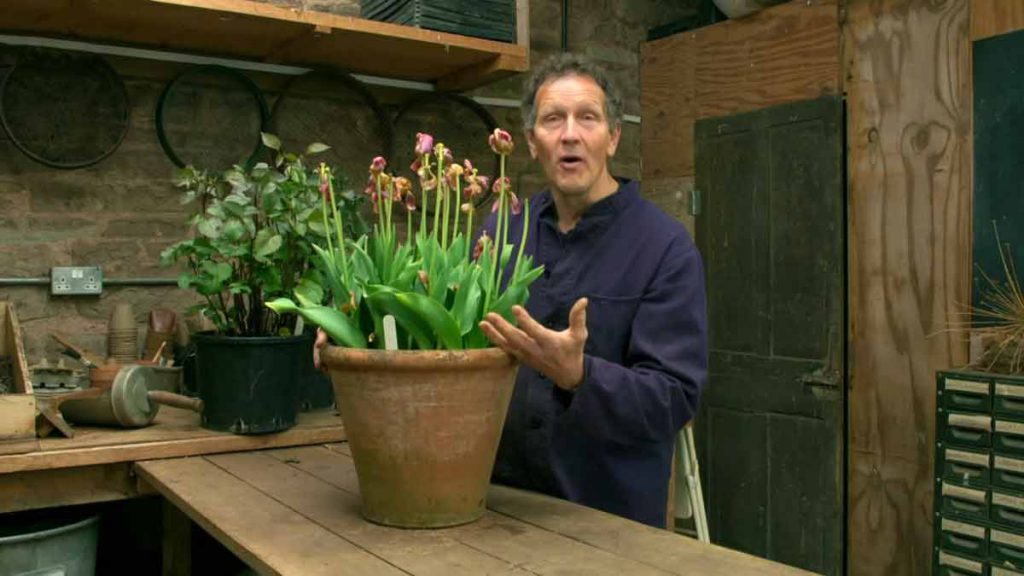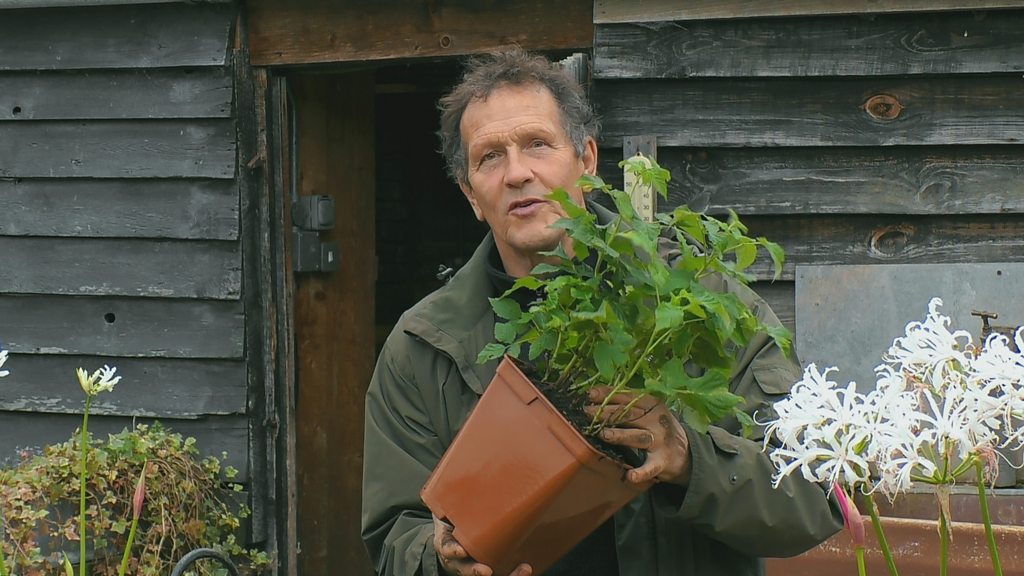Gardeners’ World Winter Specials 2021/22 episode 1: In the first of three special programmes, Monty and the team celebrate the joy that the gardening year brings with a selection of brand new stories. Adam Frost finds a world of inspirational planting designed to shine in winter when he visits Cambridge University Botanic Garden; Joe Swift heads to a garden in north London that was inspired by a holiday to the Grand Canyon.
Nick Bailey extols the virtues of evergreen planting, which come into its own at this time of year; and Kate Bradbury shows us how we can look after the wildlife in our garden over the winter months. We catch up with the three sisters from Dorset we met last year, who share the joyful highs and occasional lows of their gardening year; we head to Somerset to see how a garden designer achieves not one but two glorious peaks in her own garden; and we get tips on growing perfect peonies from a passionate plantswoman in the Welsh borders.
There’s also a chance to see what viewers have been getting up to in their own gardens.
Gardeners’ World Winter Specials 2021/22 episode 1
How to grow tree peonies
Shrubs rather than trees, these glamorous showstoppers produce a stunning display of magnificently large blooms in shades of yellow, pink and maroon in early summer. All they need is a sheltered spot in light shade with fertile well-drained soil.
With their sumptuous, romantic blooms in shades of soft pink, white and glossy red, these are traditional border stars. Take care not to plant them too deep, give them rich soil and plenty of sun, and they’ll be the belles of your border for several glorious weeks in early summer.
Herbaceous and Intersectional peonies are large herbaceous perennials with attractive foliage and large bowl-shaped flowers. Choose a peony based on flower colour and shape. Colours range from white through pink to dark red and yellow. Intersectional peonies also include plants with more unusual apricot and purple shades. The bowl-shaped flowers can be very simple with a single arrangement of petals through to fully-double blousy blooms.
Water regularly in dry spells during the first year to aid establishment, especially if planted in spring or summer. Established peonies are deep-rooted and after the first year should not need routine watering.
To promote growth and flowers, apply a general-purpose fertiliser, such as Growmore, each year in spring at 70gm per sq m (2oz per sq yd). Then mulch with a layer of garden compost or well-rotted manure to conserve moisture and suppress weeds, but avoid covering the centre of the plant as this could damage the buds.
Evergreen shrubs – Gardeners’ World Winter Specials 2021/22
The variations in colour and texture of evergreen shrubs provide structure and interest to your garden, even in the dead of winter. They are also labour-saving, being easy to care for. A useful rule-of-thumb for beginner gardeners is to plant 60-80% of evergreens.
Hardwood cuttings
Hardwood cuttings provide an easy and reliable method of propagating a range of deciduous climbers, trees and shrubs, and as bonus, they are taken from mid-autumn until late winter when more time is usually available to the gardener. Some evergreen plants, hollies for example, can also be taken at the same time of year as other hardwood cuttings.
Hardwood cutting are taken in the dormant season (mid-autumn until late winter) after leaf fall, avoiding periods of severe frost. The ideal time is just after leaf fall or just before bud-burst in spring. Although this type of cutting may be slow to develop roots and shoots, it is usually successful. The cuttings can generally be forgotten about until the following year, as the cut surface undergoes a period of callusing over the winter from which roots will develop in the spring.
If outdoor conditions are unsuitable, or for slow rooting plants, bundles of 10 to 12 cuttings can be temporarily planted in a frame or pot filled with moist sand until the spring. Cornus and Laburnum are examples of hardwood cuttings which may take longer to root.
In early spring, before the buds break, make a trench 12.5cm (5in) deep and set the cuttings out as described above. If you need more than one row, space them 30-40cm (1ft-16in) apart. Firm the soil around the cuttings. The following autumn the cuttings should have rooted and can be planted out or potted on as required.
How to grow alliums
These ornamental onions are bold and architectural, with large rounded heads of usually purple flowers, followed by attractive seedheads. Weave them through sunny borders or combine them with feathery grasses for best effect.
Plant allium bulbs in early to mid autumn. For best results border alliums need a sheltered site (to avoid the flower spikes getting blown over) and a free-draining soil with plenty of sunshine. Allium can also be grown in containers. It’s best not to plant the bulbs in areas of the garden that are regularly cultivated as it is easy to damage the bulbs when digging. The leaves die down at flowering time, so it’s best to plant alliums where this foliage is masked by that of other plants. As the leaves start to die back they can be removed with no ill effects.
Dig over the soil and remove any weeds before planting. Avoid planting into freshly manured soils which may be too nutrient rich. Plant bulbs in early autumn at a depth of about four times the diameter of the bulbs. Plant smaller growing alliums 7.5-10cm (3-4in) apart, and taller species need at least 20cm (8in) between the bulbs.





Pingback: Binge-watching Gardeners’ World: A guide for U.S.-based cold-climate gardeners